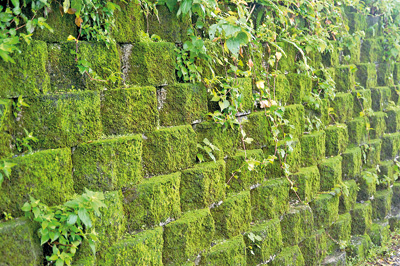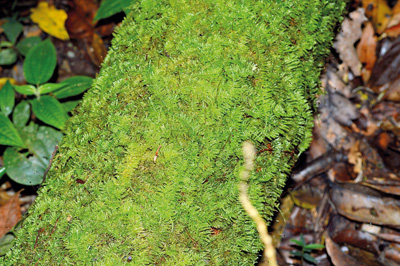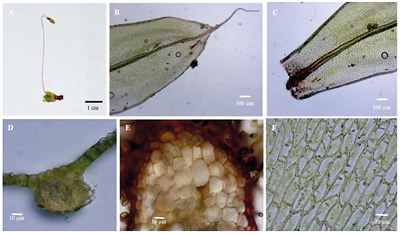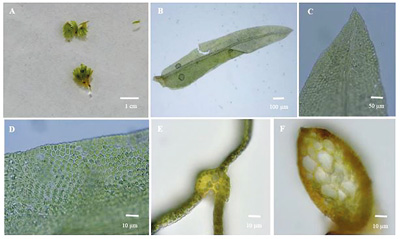News
Discovery of three new tiny climate, pollution sentinels
Mosses are small flowerless and seedless plants that usually cover damp and shady places such as walls, decaying tree trunks or a forest floor. In Sri Lanka, there are as many as 572 different species of moss and three new species were found this week.

Damp walls are a familiar sites where moss grows. Pic by Fred Hsu
The team that conducted the research, H.K. Herath, Dr. N.C.S. Ruklani and Dr. Sumudu Rubasinghe, are from the Department of Botany at the University of Peradeniya.
Their study, published in the Ceylon Journal of Science this week, described the diversity of mosses in selected localities such as the Horton Plains National Park, Loolkandura Conservation Forest, Kanneliya Forest Reserve and the Badagamuwa Conservation Forest.
The three new mosses identified are scientifically categorised as Brachymenium capitulatum, Ctenidium pinnatum and Fissidens crassinervis.
Both Brachymenium capitulatum and Ctenidium pinnatum were found in the Horton Plains National Park, growing on rotten tree trunks.
As mosses gain water directly from the atmosphere, scientists say they make a good pollution indicator – particularly for monitoring air pollution, according to UK researcher Dr Harry Harmens of the Centre for Ecology and Hydrology.
Mosses absorb a great deal of carbon and so are important in the fight against global warming as they take huge amounts of carbon dioxide and nitrogen away from the atmosphere.
These aspects are being further investigated by Dr. Rubasinghe and Dr. Ruklani at Peradeniya. Dr. Ruklani is the first holder of a PhD specialising in molecular systematics and the evolution of Sri Lankan bryophytes.
Mosses often grow packed close to one another, making a velvety carpet – but if one looks closely at a patch of moss, individual tiny plants can be identified. Moss increases water retention capacity in forests and also reduce soil erosion, according to scientific journals.
Mosses were one of the first plant to grow on earth, first appearing 470 million years ago, evolving from algae.
Scientists have discovered as many as 13,000 species, but it is believed the actual number is greater.
Nearly 1,000 bryophyte species (liverworts, mosses and hornworts) are known in Sri Lanka, and there are certain to be more yet to be discovered.
Researchers say that Sri Lanka’s diverse habitats and varied tropical climatic conditions provide perfect conditions for mosses.

Fallen tree trunk covered in mosses

Brachymenium capitulatum Ctenidium pinnatum A) Habit of the plant B) A branch showing pinnate branching pattern C) Stem leaf D) Acuminate leaf

Fissidens crassinervis var. laxus A) Habit of the plant B) Leaf C) Bluntly acute leaf apex, D-Leaf lamina cells, E) Leaf

